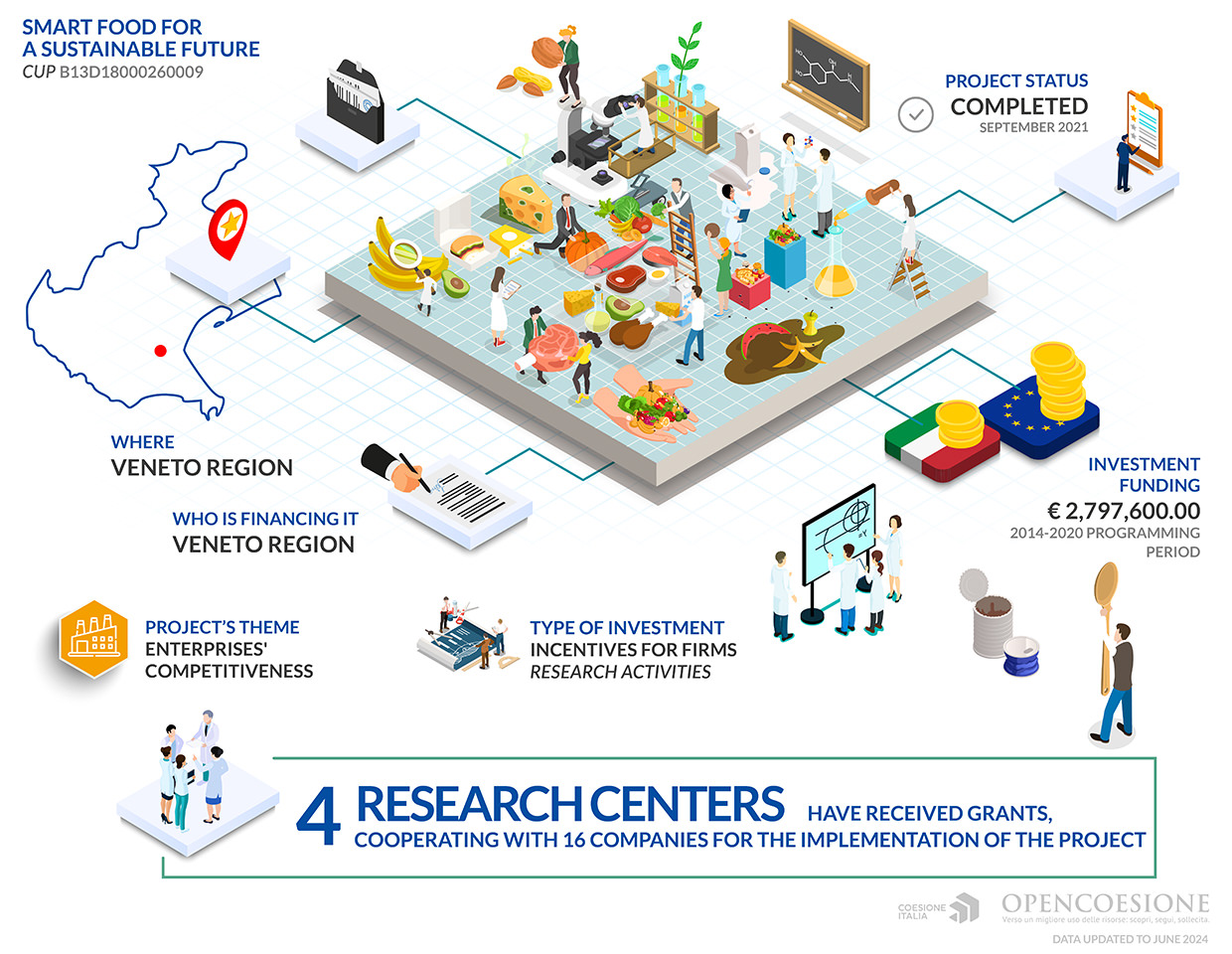Cibo intelligente per un futuro sostenibile
The project in brief

The story of the project
To understand the value of the project “Smart Food for a Sustainable Future”, we must go back to the basics of set theory: health lies at the intersection of healthy food, sustainable food, and smart food, as highlighted by the descriptive fact sheet available on the InnovatiVE portal, dedicated to the Veneto Region's Smart Specialisation Strategy (S3). With this initiative, cohesion policies have invested resources to guide Veneto's agri-food sector into the future, supporting collaboration between a group of universities and several businesses to design processes capable of ensuring food safety while reducing the inputs needed for agriculture and minimizing end-of-cycle waste.
The project, whose acronym is 3S-4H, focused on four key parameters: safety, productivity, traceability, and quality, with the goal of promoting people’s well-being and health through proper nutrition. At the heart of it all is the idea that adopting sustainable practices in agri-food can significantly reduce environmental impact and improve public health.
The project is coordinated by the RIBES-Nest innovative network, which has been operating in the fields of food and health since 2016, creating synergies and fostering interaction between businesses in the Veneto region and research entities such as the Universities of Padua, Verona, Venice, Trieste, and the National Research Council (CNR).
The initiative is funded by the European Regional Development Fund, with an allocation of approximately 2.8 million euros, aimed at multiple objectives:
Improving food safety, starting with the identification of rapid and reliable methods for studying mycotoxins in raw materials such as flour, corn, and milk, and identifying the most common mycotoxins for each product.
Conducting in vitro studies on the toxicological effects of mycotoxins on organ-on-a-chip, which are miniature models of biological organs.
Strengthening the traceability of raw materials using analytical methods, such as studying the shape and specific weight of corn, and more complex analyses such as evaluating the presence of radionuclides in medicinal plants to determine, for instance, their geographical origin and differentiate Italian products from those of Balkan origin. Part of the activity also involved identifying pollutants, including heavy metals, in raw materials.
Determining the active ingredients or nutritional properties of food products to enhance their value. As a result, reports have been prepared detailing the presence, stability, and functional and biological properties of specific nutrients and active ingredients in various foods, extracts, semi-finished products, and supplements. The enhancement of these products has contributed to the development of new market potential and opportunities for businesses.
Evaluating the recovery and recycling of by-products by enhancing raw materials from other sectors, particularly Agri-food, through enzymatic hydrolysis and supercritical fluid extraction technologies to obtain high value-added products. The green extraction methodology, for example, was scaled up to larger samples to verify the potential industrialization of the process.
Studying the potential energy recovery from heat produced during food processing, such as in a dairy company, and identifying energy efficiency strategies for specific pilot cases. Promising results were also achieved regarding the use of extracts or smart foods, the identification of the most suitable methodologies for evaluating the improvement of sleep physiology, through monitoring functions during the intake of “traditional food” and “enriched food” and the development of an appropriate experimental protocol.
